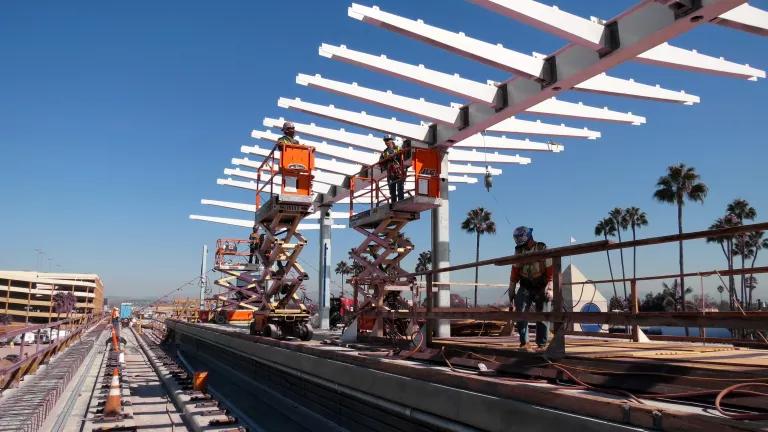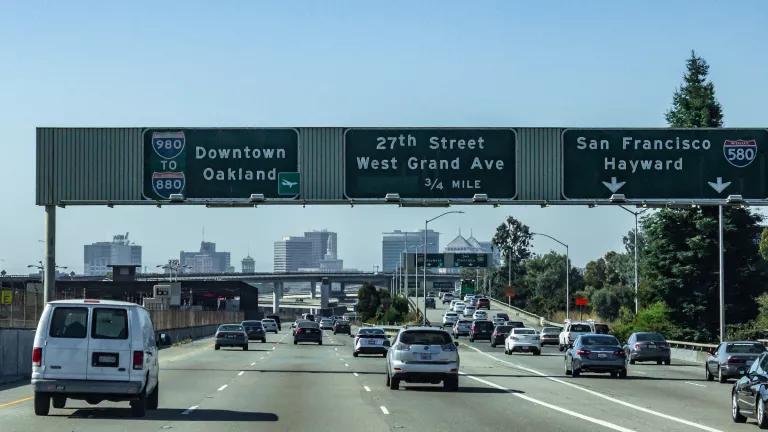California Sets Standards for 100% EV Sales
California's proposed standards require one-third of vehicles sold by manufacturers to be electric vehicles (EVs) starting in model year 2026, moving towards 100 percent of sales in 2035.

In just over a decade, California will only sell electric vehicles, based on new proposed standards from the state’s Air Resources Board (CARB). The proposed standards require about 35% of vehicles sold by manufacturers to be electric vehicles (EVs) starting in model year (MY) 2026, moving towards 100% sales of EVs in MY 2035 under the Advanced Clean Cars II (ACCII) program. The Board is scheduled to hold a public hearing this June 9th on the item, and have a vote in August on whether to move forward. It is imperative that CARB adopts and implements strong clean car standards to meet climate goals and improve air quality and health.
The adoption would make California the second jurisdiction globally, after British Columbia, to set legally-binding 100% zero-emission vehicle (ZEV) standards for passenger vehicles. Across the globe, seventeen national, provincial, and state governments have already signed commitments to a full transition to electric passenger vehicles, with that number growing according to the International Council on Clean Transportation. Manufacturers are also committing to a fully electric future; Ten automakers have already announced they will have all new vehicles be electric drive, with one as soon as 2025.

Source: International Council on Clean Transportation (2020)
By setting standards that will put more electric cars and trucks on the road, the state will also protect residents from harmful air pollution as well as drivers from volatile gasoline prices, as our colleague, Max, has blogged about, while driving innovation and creating thousands of good jobs, California – the 5th largest economy in the world by size – already has nearly three dozen companies making EV-related companies, with EVs now being the state’s largest export, according to the state’s Energy Commission.
What do the New Rules Do
The new proposed standards will require 100% of the vehicles sold in California to be electric by 2035 and by the end of the decade, almost 70% of the vehicles sold in California will be electric, as shown in the graph below.
By providing stronger stringency in the early years of the program, more vehicles will enter into the used secondary market faster, providing drivers with the additional opportunities to purchase used EVs. Additionally, CARB has proposed stronger requirements for EVs that will get vehicles with longer ranges on the road (a minimum of 150 miles per charge). Plug-in hybrid electric vehicles will be still allowed to remain in the program but are limited to no more than 20% of an automaker’s requirement and would need to achieve at least 50 miles of all electric range.

Driving Towards a Zero-Emission Future
In addition to manufacturers announcing goals and plans for an increasingly electric vehicle line-up, it is clear that drivers also want these clean cars, both in the United States and around the world. At the end of 2021, electric cars were almost 36% of total vehicles sales in Germany. Domestically, we have also seen an exponential increase in EV sales in the past several years. In 2021, national sales of new EVs doubled, and for the luxury car segment nearly one in three vehicles was an electric vehicle, according to data compiled by Baum & Associates, an automotive research firm.
In California, sales reached 12% of total sales, already exceeding the requirements in 2025 for the state’s Advanced Clean Cars program. These numbers, plus the commitments from automakers described above, are a sign that not only will the market be ready to meet these requirements but may in fact be able to move faster than proposed.

Source: Energy.Gov
Access to charging is increasing daily
A perceived barrier for widespread EV adoption is the lack of electric vehicle charging infrastructure. With longer vehicle ranges, increased networks of charging infrastructure, and further state and federal investments for chargers imminent, many of the past barriers will be addressed. However, to ensure that all drivers have access to chargers, CARB has also proposed requirements for auto makers that will help drivers charge their vehicles and do so quickly. EVs will be required to have DC Fast Charging capabilities, which will allow drivers to recharge their vehicles about 80% in 15-30 minutes—an important feature, especially when driving long distances.
CARB has also proposed incentives to increase the number of electric vehicles that service disadvantaged communities, which tend to be low-income and communities of color and are historically overburdened with transportation pollution. Under the proposed provisions, vehicle manufacturers will earn additional credits for placing EVs in carsharing programs, which would increase access for underserved communities that often face disproportionate pollution burdens, including environmental justice (EJ) communities.
While it is encouraging to see CARB acknowledge the need to increase access to electric vehicles in these communities, additional policies and measures need to be taken to accelerate emissions reductions and increase access in the areas most historically overburdened with transportation pollution. Governor Newsom’s historic $10 billion zero-emission vehicle package can and should be directed towards this goal.
To realize the benefits – and others – outlined in this blog, we urge the Board to support strong clean car standards when they hear the item in June and vote in August.
With seven of the top ten polluted cities in the U.S. located in California, and climate change already burning up the state and the West, we don’t have a moment to lose. The IPCC says that we stand at a 'make or break' moment for climate action. The transportation sector is the largest source of carbon pollution—making policies like this essential if we are to have any chance of preventing the worst impacts of climate change.





